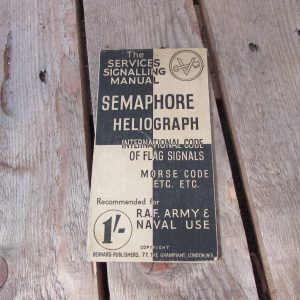-
 WWI Armed forces semaphore and heliograph booklet
×
£10.001 × £10.00
WWI Armed forces semaphore and heliograph booklet
×
£10.001 × £10.00
Original price was: £195.00.£175.00Current price is: £175.00.
Panzer Lehr division , telephone cable reel.
Telephone cable reel Kettenkrad Table
Telephone cable reel, Battle of the Bulge, from German Kettenkrad, half track gun tractor.
Recovered near Rochefort in The Ardennes Forest, Battle of the Bulge in the winter of 1944-45. This Panzer Lehr division Telephone cable reel from the German Kettenkrad, half track gun tractor.has been made into a table by the adding of a plate glass top. This item is of relic condition but by making it a table has now a function again, great piece.
During the run up to the offensive, Panzer Lehr was kept in reserve on 15 December the day before the offensive began , Panzer Lehr was still severely under strength, with only one of its two tank battalions ready for action , the other restored to its parent unit, the 3rd panzer division. Both of its panzer grenadier regiments were at 80 percent of its authorised strength. It had only 57 tanks (30 panthers and 27 panzer 1v) and 20 Jagdpanzer 1v/70s by the time the attack jumped off.
Telephone cable reel, Battle of the Bulge, from German Kettenkrad, half track gun tractor.
Telephone cable reel Kettenkrad Table
The size of this item is 24 inch top x 21 inch height.
Due to the size of this item , there will be a delivery price , or can be picked up .
Photo card provided to show item.
The Kettenkrad started its life as a light tractor for airborne troops. The vehicle was designed to be delivered by Junkers Ju 52 aircraft, though not by parachute. The vehicle had the advantage of being the only gun tractor small enough to fit inside the hold of the Ju 52, and was the lightest mass-produced German military vehicle to use the complex Schachtellaufwerk overlapped and interleaved road wheels used on almost all German military half-tracked vehicles of World War II.
Steering the Kettenkrad was accomplished by turning the handlebars: Up to a certain point, only the front wheel would steer the vehicle. A motion of the handlebars beyond that point would engage the track brakes to help make turns sharper. It was also possible to run the vehicle without the front wheel installed and this was recommended in extreme off-road conditions where speed would be kept low.[1]